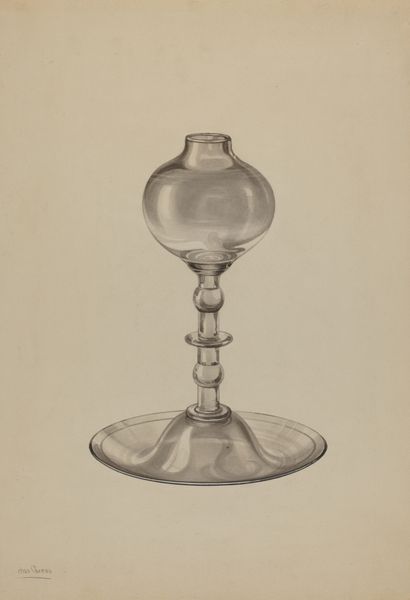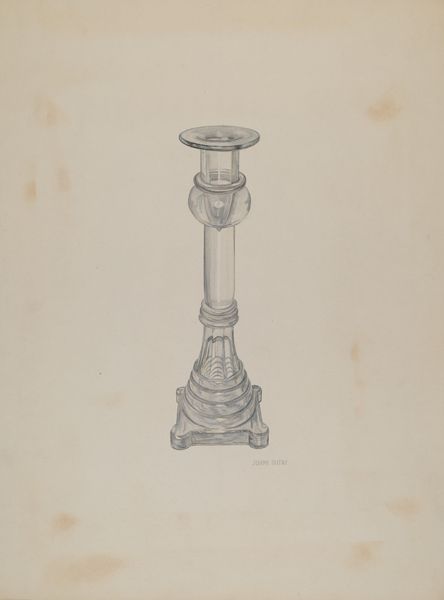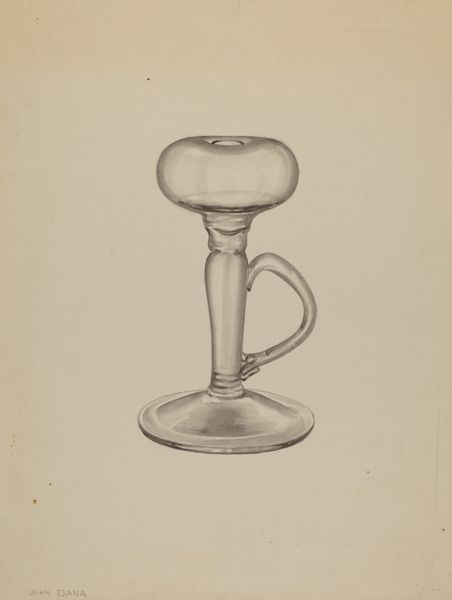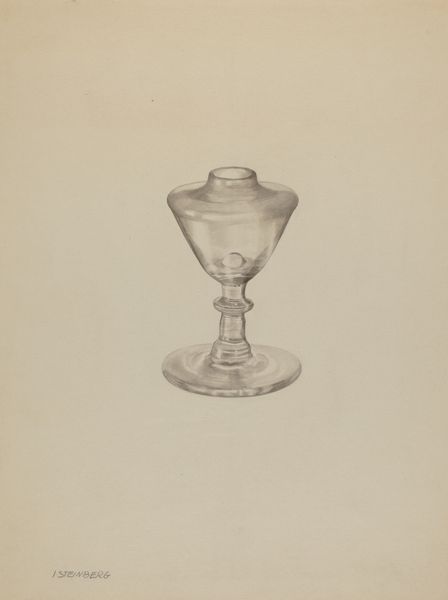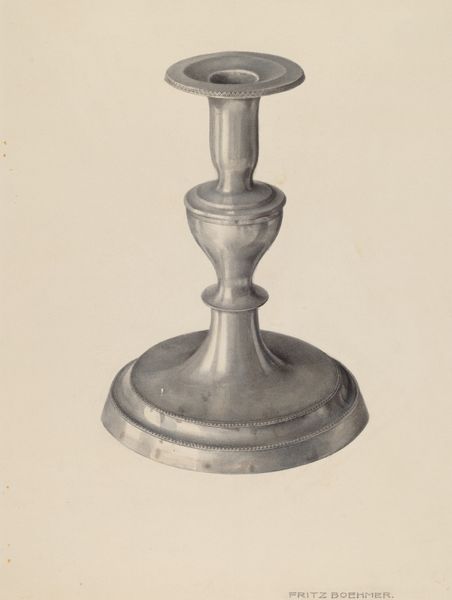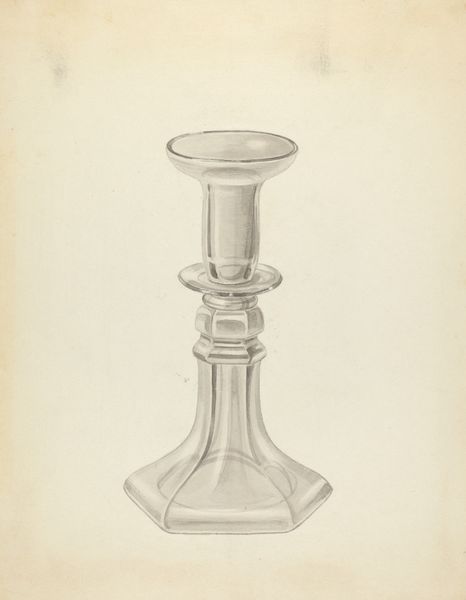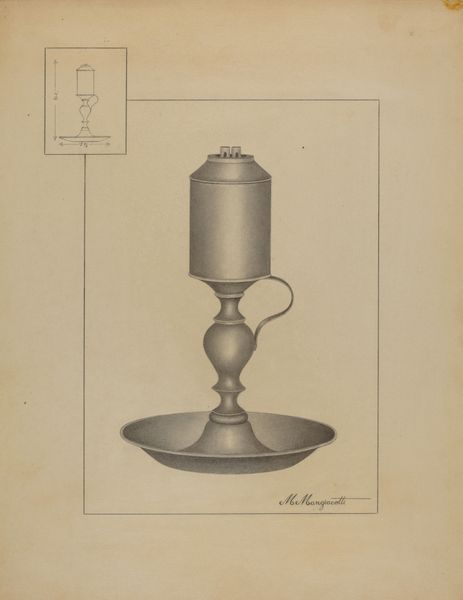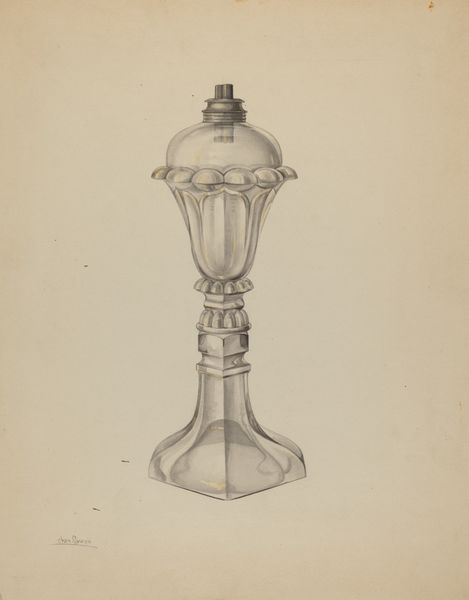
drawing, pencil
#
pencil drawn
#
drawing
#
pencil drawing
#
pencil
#
modernism
Dimensions: overall: 28.3 x 22.4 cm (11 1/8 x 8 13/16 in.) Original IAD Object: 4 1/4" high
Copyright: National Gallery of Art: CC0 1.0
Editor: This is John Tarantino's "Spark Lamp," a pencil drawing from around 1936. I find the shading really intriguing, it gives the lamp almost a ghostly presence. What strikes you about this work? Curator: What interests me is the intersection of design, industry, and art, especially visible through its materiality and intended use. We’re seeing a plan, a step in the production process of an object meant for the home. Does it strike you as particularly high art, or something else entirely? Editor: It definitely feels more utilitarian than some art. Like a blueprint, almost? Curator: Exactly. We must then ask, what is the labor that goes into design, and how is that labor valued versus the labor of, say, a painter in the same period? We need to question these artificial hierarchies that elevate one type of artistic production above another. Consider how accessible the means of production for this drawing are – pencil, paper – versus the more complex process of manufacturing the lamp itself. Editor: That's a really interesting way to look at it. So, the value isn’t necessarily in the finished lamp, but in the whole process from concept to object and even this document of its potential? Curator: Precisely. This drawing invites us to think critically about the labor involved, the materials utilized, and the social context within which both the drawing and the intended lamp existed. It becomes a window into understanding design not just as aesthetic creation, but as a complex social endeavor tied to material conditions. Editor: I never thought about a drawing like this holding so much... material meaning, I guess! It’s cool to see the connection between design and larger social themes. Curator: Absolutely, it's these everyday objects, and their design processes, that reflect larger societal structures of value, production, and consumption.
Comments
No comments
Be the first to comment and join the conversation on the ultimate creative platform.


